Matador Network's Blog, page 1072
June 20, 2019
Cities ask EU help against Airbnb
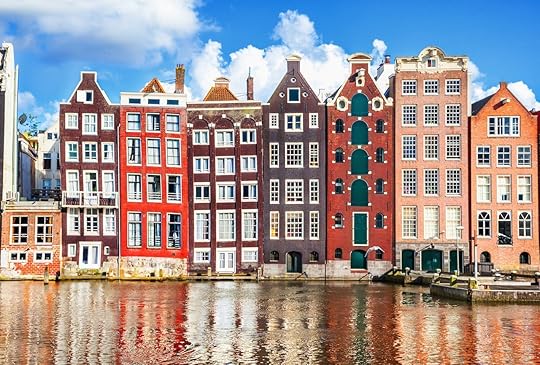
Travelers think of Airbnb as a convenient and cheap alternative to traditional hotels, but cities around the world don’t necessarily hold the same positive view. Amsterdam, Barcelona, Berlin, Bordeaux, Brussels, Krakow, Munich, Paris, Valencia, and Vienna wrote a joint letter to the EU in which they argued that Airbnb was negatively changing neighborhoods by leading to housing shortages and rising rent, creating feelings of insecurity, “touristifying” neighborhoods, and the like.
The cities said, “European cities believe homes should be used first and foremost for living in. Many suffer from a serious housing shortage. Where home can be rented out more lucratively to tourists, they vanish from the traditional housing market.”
The Guardian reports that after a 50 percent rise in tourist rentals, Palma de Mallorca saw a 40 percent increase in residential rents.
To solve the issue, the cities are asking Airbnb to provide data about the rentals advertised on the platform to help them prevent violations of short-term rental regulations.
The cities’ chief goal is to retain their autonomy on the issue, as well as the ability to enforce local regulations surrounding housing requirements.
According to Ian Brossat, Paris’ deputy mayor in charge of housing, “In the four central arrondissements of Paris, a quarter of all properties are now no longer homes but purely short-term rentals for tourists.” 

More like this: The 15 coolest hostels in Europe
The post Ten European cities ask EU for help fighting Airbnb appeared first on Matador Network.

Car-free day in London
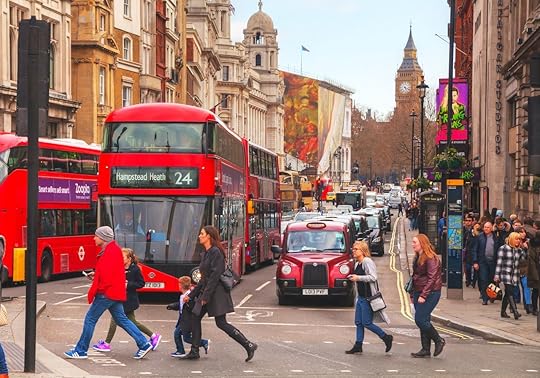
Sadiq Khan, the mayor of London, has big plans to battle air pollution, with the implementation of an official car-free day for the city. On September 22, 12.3 miles of roads in the center of England’s capital will be closed to vehicle traffic, including roads around London Bridge, Tower Bridge, and several other areas, reports The Guardian.
The event is an attempt to curb the negative effects of air pollution in the city, which officials say is killing approximately 9,000 people each year and leaving many others to deal with health issues. Over 50 percent of London’s air pollution is caused by vehicles.
Across the city, various boroughs will hold events designed to encourage walking, cycling, public transport, and other sustainable alternatives to driving. There will also be play streets for children, so they can join in on the fun.
September 22 will therefore be the ideal day to take a one-day walking tour of London without having to fear for your life. 
H/T: The Guardian

More like this: The 7 cities making the biggest strides toward sustainability this year
The post London is taking a breather with a car-free day this September appeared first on Matador Network.

Visiting Germany’s Rheingau region

When you think of wine country, the rolling hills of Napa Valley, the green fields of Tuscany, and the vineyards of Bordeaux may immediately spring to mind. Wine lovers certainly aren’t parched for options — hell, there’s even a wine region in every US state. Many of the best places for wine around the world, however, are taken over by crowds. Thankfully, that’s not so in the Rheingau, one of Germany’s top wine regions.
The Rheingau is just west of Frankfurt. It’s not among Germany’s most heavily trafficked destinations, nor is it typically the first stop on a wine connoisseur’s Euro tour, yet the Rheingau is as close to the epitome of ideal wine country as it gets. It’s the home of the Riesling grape, and wherever you go in the Rheingau, it feels like people drink Riesling like they drink water. The area is attractive even for people who aren’t wine enthusiasts, as the region is dotted with small towns along the Rhine River that have an abundance of classic German architecture, food, and culture. The next time you go to Germany, it should be for a Rheingau visit.
Where to stay on a trip to the Rheingau
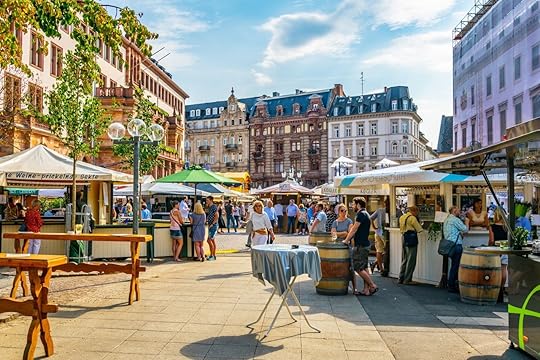
Photo: trabantos/Shutterstock
The Rheingau region is just 20 minutes away from Wiesbaden, the capital of the German state of Hesse. A prominent global spa town in the 19th century, Wiesbaden is still famous for its restorative waters, wide range of cultural activities, and prime location. Whether by train or by car, it’s the perfect base for exploring the Rheingau. Not only are there geothermal spas where you can relax (and sober up) after a tough day of drinking Riesling — there are 26 hot springs throughout the city — there’s also an ornate casino reminiscent of Monte Carlo that’s said to be the inspiration for Dostoevsky’s The Gambler.
Once you’ve followed in the Russian author’s footsteps and lose all your money at the casino, you can sample some traditional German chocolates to lift your spirits. The Swiss and Belgians might get all the shine, but German chocolate deserves similar praise. You can’t leave Wiesbaden without stopping at Chocolateria Kunder, which manufactures its own chocolates, or Cafe Maldaner, the only Austrian-style chocolate cafe in Germany.
Wiesbaden may have all the offerings and comforts of a metropolitan city, but a 10-minute drive north will bring you to what feels like the heart of the countryside. Ride the Neroberg funicular railway to the top of an 800-foot hill, where you can walk a nature trail that skirts alongside a gilded Russian church.
The best winery tours through the Rheingau

Photo: Romrodphoto/Shutterstock
The Rheingau is home to 7,600 acres of vineyards that are located on the banks of the Rhine River, and spans about 30 miles from Wiesbaden to Rudesheim. The area is famous for producing a dry Riesling with citrus aromas. Some 90 percent of the Rheingau’s vineyards are located on the Rhine’s northern banks, and winemakers rely heavily upon the river for its moderating effect on the climate.
For the full wine experience, follow the signposted routes through the region. They vary only depending on your preferred mode of transportation. The Rheingauer Riesling Route is intended for driving, the Rheingauer Riesling Pfad for hiking, and the Rheingauer Radwanderweg for cycling. Regardless of which route you choose, you’ll find yourself traveling over high trails, through vineyards, and past castle ruins, monasteries, and small, picturesque towns. Including secondary connections, the Riesling routes span more than 74 miles, though you can experience as much or as little as you wish according to your itinerary.
If you find yourself in the Rheingau during the summer, you might catch the annual Rheingau Musik Festival, a “unique combination of culture and nature, music, enjoyment, and joie de vivre.” The festival takes place every summer, and this year it’s on June 26.
Visit the town of Rudesheim
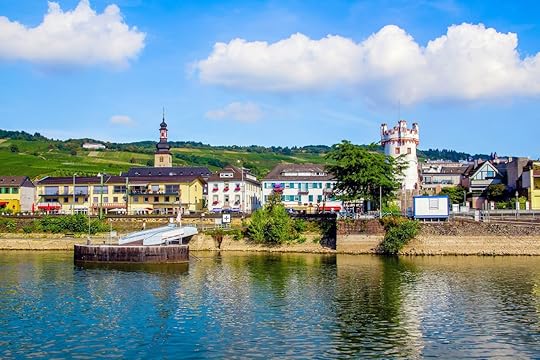
Photo: marcociannarel/Shutterstock
Just over half an hour from Wiesbaden, Rudesheim is a classic German winemaking town on the banks of the Rhine. The best way to begin your day in Rudesheim is by taking the 15-minute cable car up to the Germania monument, which overlooks the old town, vineyards, and the river. The massive monument was built in 1871, commemorates the founding of the German Empire and the Unification of Germany, and is a great way to introduce yourself to the history of the region.
Take the chairlift back into town, and you’ll immediately find yourself surrounded by classic German buildings, aromatic bakeries, and restaurants serving up local fare. Rudesheim’s most famous street is the Drosselgasse, a 15th-century alley that used to be a passage for sailors carrying their oars, sails, and rigging back to their homes. Now, the street is filled with half-timbered homes and wine taverns. Drosselhof is a great place to sit outside and enjoy sausages, schnitzel, potatoes, and, of course, more Riesling.
If you haven’t had your fill of wine quite yet, you can visit the Brömserburg, one of the first stone castles in the Rhine Gorge, built in the 12th century. Now, it’s a UNESCO World Heritage site housing the Rheingau Wine Museum and features exhibits on wine culture and history.
See Eltville, Rheingau’s largest town
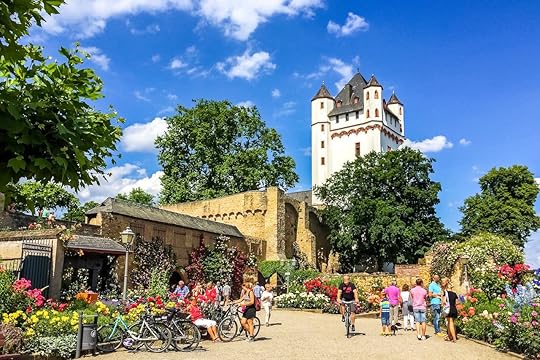
Photo: LaMiaFotografia/Shutterstock
A scenic 20-minute drive east along the Rhine will bring you to Eltville, the largest town in the Rheingau. On a nice day, you can find most residents and visitors strolling along the Platz von Motrichard promenade, which runs right alongside the river and brings you to Electoral Castle. The castle is a 14th-century structure with a 79-foot tower and rose gardens perfect for a spring or summer walk. You can climb the steps to the tower’s top for a sweeping view of the town and surrounding vineyards, before returning to Platz von Motrichard and diving into the town’s booming wine culture.
The Eltviller Weinprobierstad should be your first stop. This wine-tasting stand on Platz von Montrichard is a collaboration between eight Eltville wineries, each of which freely gives away samples of Riesling and Pinot Noir. Every week, the Eltville winemakers use the stand to showcase their offerings, and it’s the perfect place to sample some local vintages while enjoying river views. Once you’ve got a healthy buzz, you can venture into the historic town and visit one of the many wine taverns or wineries, like Weingut Koegler or Weinhaus Krone.

Photo: Alice-D/Shutterstock
Perhaps surprisingly, one of the Rheingau’s biggest wine-producing spots is a church. The Eberbach Abbey, a 12-minute drive from Eltville, was home to the largest vineyards in medieval Europe, which are now managed by the state of Hesse. The 12th-century abbey is home to around 500 acres of cultivated vineyards, three-quarters of which are planted with Riesling. The monastery serves primarily as an event venue — the Rheingau Musik Festival takes place here — but also runs guided tours through its cloisters, halls, and wine cellars.
However much you’re able to fit into your trip, you won’t be disappointed by a wine-fueled vacation to Germany’s Rheingau region. 

More like this: The 7 most exciting places to travel to drink wine in 2019
The post Your next German vacation should be in Rheingau wine country appeared first on Matador Network.

The best things to do in Jordan

By all measures, Petra is the most famous attraction in Jordan. The ruins saw 780,000 visitors in 2017. It’s also where Indiana Jones found the Holy Grail, increasing its appeal among Western audiences. The fame of Petra overshadows all the rest Jordan has to offer, an unfortunate truth as Jordan offers hiking, expansive valleys, and the best lamb dish you’ve ever had. Religious history in both the Muslim and Christian faith runs deep here, with the holy texts of both religions citing locations believed to be within the country. Petra is, in itself, an incredible site that is worth a visit — but here are the top things to do in Jordan beyond the Lost City.
Day hike through Wadi Mujib.

Photo: Iuliia Khabibullina/Shutterstock
Wadi Mujib is a canyon in southern Jordan about an hour and a half south of the capital city, Amman. It looks like a thin slice cut into the sandstone mountains, and the river that runs through it is believed to be the biblical Arnon stream. The altitude inside the canyon goes as high as 2,952 feet and as low as 1,312 feet below sea level. This change in elevation causes the river to form an aqua park-like landscape with water often appearing a similar green to the Caribbean Sea. A hike provides plenty of opportunities to slide from rocks into naturally formed pools.
There are various trails you can take according to your fitness level. The most popular is the Siq Trail, which takes two to three hours from start to finish, with the base of a waterfall at the end of the trail. All trails start from the Mujib Adventure Center. There you’ll be given life vests — wear it at all times for your safety. Along some parts of the trail, you need to swim against the current and climb rocks against water flows. You can also hire a guide at the Mujib Adventure Center. This keeps you safer and also enhances the educational experience, as the guides know the history of the canyon and which rocks are safe to jump from. A little help can also come in handy with the light climbing involved in working through the canyon.
Camp in the Arabian desert.

Photo: EyesTravelling/Shutterstock
Wadi Rum is a special valley in the Arabian Desert. The landscape resembles Mars at first glance so much so that parts of the movie The Martian were filmed here. The sunsets bring out a striking contrast of red and orange across the red dunes and rock bridges of the valley. It’s possible to see hundreds of stars at night when the weather permits. Multiple campsites are available for overnight stays, ranging from basic tent-style camping to glamping. No matter which option you choose, stars will be the only light source around other than your campsite and there won’t be much noise except from other campers, so be prepared for solitude. Nights in the desert get cold fast — bring clothes for both unbearable heat and freezing cold. Reserve your campsite in advance through an operator such as Wadi Rum Bedouin Camp or book individually with a quick Google search for “Wadi Rum camping.”
Driving from Amman to Wadi Rum, also in the south of the country, takes four to five hours. If camping isn’t your thing, Jeep tours are a great way to explore Wadi Rum. They cover more ground compared to hiking tours. You can find more information about Wadi Rum and the tours at the visitor center, where trail maps and guided tour information are available. While camel rides are available, be conscious about having an ethical experience.
Get out to the Dead Sea, but consider your environmental impact.
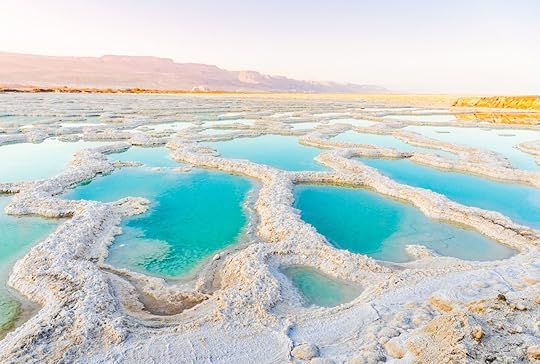
Photo: Olesya Baron/Shutterstock
The Dead Sea is about an hour and twenty minutes west of Jordan. It’s actually a giant salt lake and has attracted both health and leisure visitors from around the world for over a thousand years. Among its biggest appeals for wellness travelers is that its elevation makes it possible to inhale more oxygen there than almost anywhere else. At low altitude, the barometric pressure is higher than the sea level, which increases the oxygen content of the air. The high salinity of the water floats whoever tries to swim and prevents plants and fish living in it — hence the name — and is also quite fun to float around in. The water is about seven times saltier than the world’s oceans and is also rich in minerals that give it an oily feel. The unusual chemical compounds of the water and the mud are believed to have medical and cosmetic benefits for the skin and body.
As tourism to both Jordan and neighboring Israel grows, the issue of what impact these mud baths and floating excursions are having on the environment has come into focus. Environmental groups and media outlets have raised concerns over the Dead Sea’s rapid shrinking, partially a result of industrial evaporation, sinkholes, and the pounding sun, but also from diversions of the incoming water source. Jordan is working on projects to stop the shrinking, but because tourists are prone to taking bottles of the “magic mud” home with them, it’s hard to offset the changes. As visitors, it’s vital that we do our part to help preserve this spectacle of nature. Enjoy your time here and leave the water and mud where they belong.
Walk through art and history in Amman.

Photo: videobuzzing/Shutterstock
Amman is a city of four million people surrounded by and containing ancient ruins, a modern capital as rich in cultural art as it is in history. Deciding what to do on a one or two day stay in the city can be an overwhelming experience, but a visit to the Citadel is a must. In the heart of the city, this historical site has housed people since the Neolithic period. It is home to the renowned Temple of Hercules and the Jordan Archaeological Museum, along with the often-photographed stone Hand of Hercules. Thanks to its location at the top of Jabal Al-Qal’a, you’ll have 360-degree views of the city. Just southeast of the Citadel is the Roman Theatre, a sprawling amphitheater that hosts both the Museum of Popular Tradition and the Jordan Folklore Museum, both of which you can walk through in an hour or so.
Another Amman specialty is its unique taste for blending cultural art with coffee. A short walk from the Citadel and the Ayyubid medieval watchtower, Darat al Funun has six renovated historical buildings in a complex where it hosts regular exhibitions from artists and collectors. It also has a peaceful garden cafe with city views to enjoy a cup of coffee after touring the exhibits on display. Fann wa Chai is a cafe and art gallery where you can buy pieces from local artists, though the preference here is to sip a cup of tea. Salam Kanaan Gallery on Rainbow Street is a perfect spot for people watching as the steady stream of locals and tourists make their way through the heart of downtown.

Photo: Zurijeta/Shutterstock
Amman is also where you can try local cuisine quite easily. The primary meal you need to have is mansaf, a traditional Jordanian dish of well-cooked lamb served with a bowl of rice and a sauce called jameed. The special ingredient of jameed is dried goat yogurt. If you are not used to consuming goat products, it can upset your stomach, an experience many tourists learn the hard way. Sufra is a nice restaurant just up the street from Salam Kanaan Gallery, where you can find mansaf as well as other traditional dishes like shawarma or doner. Whether you choose chicken or beef, both of these dishes are served wrapped up in saj bread with tahini sauces. And, because you’re in the Middle East, you have to try falafel. This is a vegan dish primarily served for breakfast. You can find it at restaurants and stalls across the city, but get it early in the morning because the best shops run out of falafel before noon. 

More like this: Why Tunisia should be your first stop in the Arab world
The post The best things to do in Jordan beyond Petra appeared first on Matador Network.

June 19, 2019
What is floatation therapy
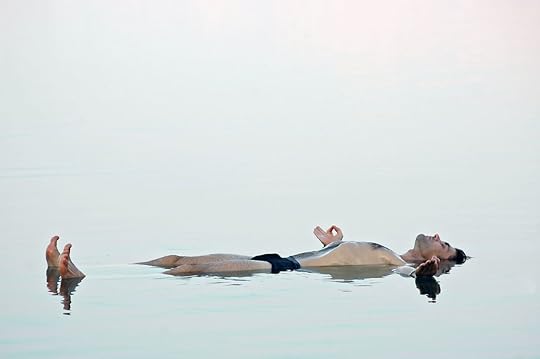
Floatation therapy has become the go-to healing experience for everything from jet-lag to jangled nerves — but what’s it all about? Devotees of the practice claim floating in a dark, womb-like tank of warm, salty water will heal body, mind, and spirit from the stresses of modern life. In fact, floating has become so popular since the 1950s — when the first “sensory deprivation tanks” appeared on the scene — that most towns and cities now have their own float center. Once you try it yourself, you’ll understand why it’s arguably the most relaxing wellbeing practice available. If you are wondering what all the fuss is about, here’s everything you need to know before your first floatation therapy.
What happens during the practice?
Inside a floatation tank, our central nervous system gets a break from processing external stimuli, and our body shifts into a state known as parasympathetic response. In this state, healing happens at an accelerated rate, blood pressure and heart rate drops, and our immune system gets a boost. Floating in the dark and quiet allows our brains to drop into the deepest state of relaxation — the Theta brainwave state — which supports profound learning, heightened creativity, and personal growth. Neuropsychologist Justin Feinstein, who is studying the benefits of floating for treating Post Traumatic Stress Disorder, believes it may offer a shortcut to a meditative state for people who otherwise struggle with meditation.
Preparing for your first float
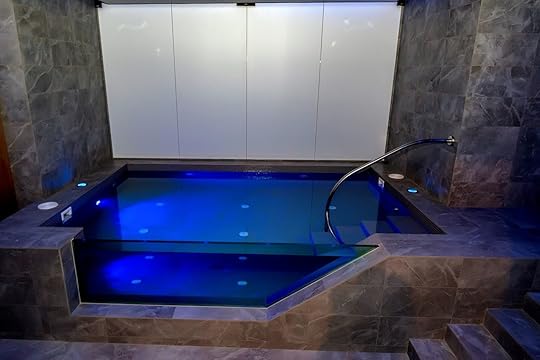
Photo: Yakov Oskanov/Shutterstock
Before you jump in and drift away, there are a few things you should know.
Try to avoid drinking for two hours beforehand, and use the toilet before you hop in the tank. You can get out if you need to but will benefit much more if you remain undisturbed.
If you have any exposed cuts or get salty water into your eyes it will sting like crazy. Apply waterproof plasters to any small cuts or scratches, and avoid touching your face once you are in the water.
Wear nothing except for a pair of earplugs to keep the salty water out. Floating naked leads to the most relaxing womb-like experience and helps to keep the water clean too. The water and air inside the flotation room will be heated to the temperature of your skin, so you won’t be distracted by contrasting temperatures.
Shower thoroughly before and after your float to keep the tank clean and wash the salt from your skin — it can cause dryness and irritation if left.
Setting yourself adrift
Once you step down into the tank and lie back in the water, prevent yourself bobbing about by touching the sides of the tank for 30 seconds or so until you feel stable in the water. Then relax your arms and legs, and you should float steadily in the center without any further effort. You will now be alone in the dark with your thoughts for an hour or more, which might feel daunting for some. Quieting the mind takes time and practice, so don’t be disheartened if you feel distracted or restless. Seasoned floaters recommend that you relax, let go of expectations, focus on your breath and simply allow your mind and body to adjust to the new environment.
Everyone’s experience is different, but most report feeling euphoric, rejuvenated, energized, and clear after a float session, with heightened perceptions of sensory stimulus. Take a few minutes — or longer if you can — to integrate the experience of floating, and prepare for the outside world. Most float centers have a relaxation area where you can enjoy a glass of water or herbal tea and adjust gently to the world beyond the tank.
Wild floating
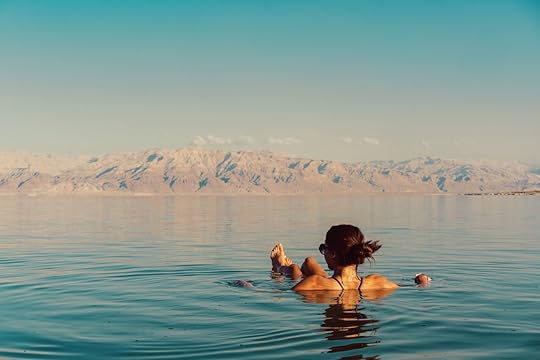
Photo: Hrecheniuk Oleksii/Shutterstock
For those who prefer to relax out in nature, you can experience the benefits of floatation therapy in any naturally occurring salt lake.
The Dead Sea, situated between Jordan, Pakistan, and Israel, is perhaps the best-known destination for wild floating and one of the most saline bodies of water on Earth — almost 10 times as salty as the Pacific Ocean and completely hostile to life. In the US, the Great Salt Lake in Utah can be accessed for floating from Antelope Island State Park, which lies about 40 miles north of the city and has campgrounds and shower facilities, as well as roaming herds of bison and sheep.
Moving to Africa, Lake Assal in Djibouti has the highest salinity of any lake outside of Antarctica and is one of the hottest places on earth. The lake has formed inside a volcanic crater lying 150 meters below sea level, which can be found about two hours out of Djibouti City along National Road 1. If you are in South America and make it down to Chile, Las Lagunas Escondidas is a collection of small turquoise saline lagoons situated roughly an hour’s drive from San Pedro de Atacama. Here you can enjoy a cool, relaxing float against a backdrop of ice-capped mountains, with simple shower facilities available to rinse off the salt.
Assisted floating
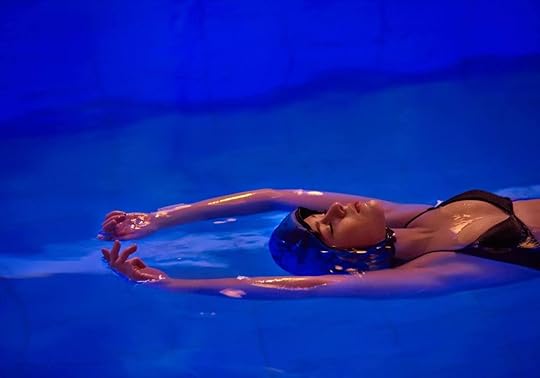
Photo: Flothetta/Facebook
If you love the idea of floating but accessing a salt lake or float center doesn’t work for you, you can still get involved and experience the benefits of weightless relaxation in water. Flothetta — a specially designed therapeutic kit originating from Iceland — lets you experience floating in a normal swimming pool while wearing an inflatable helmet and knee pads.
Alternatively, Watsu water massage — originating from the Harbin Hot Springs of California — combines support in the water by a trained practitioner, with muscle stretching, Shiatsu massage, and dance movements. A Watsu therapist takes clients into a warm hydrotherapy pool where they can completely let go as the body is gently manipulated using the water’s resistance to create flowing movements. The combined pressure of water and massage improves lymph drainage and reduces swelling, as well as providing pain relief and improving mobility.
Floatation therapy brings such a range of benefits for body, mind, and soul through the simple, accessible experience of floating in water — it’s easy to see now why it’s so widely practiced and becoming more popular. 

More like this: Everything you need to know before your first Thai massage
The post Everything you need to know before your first floatation therapy appeared first on Matador Network.

What to do in Victoria, Australia
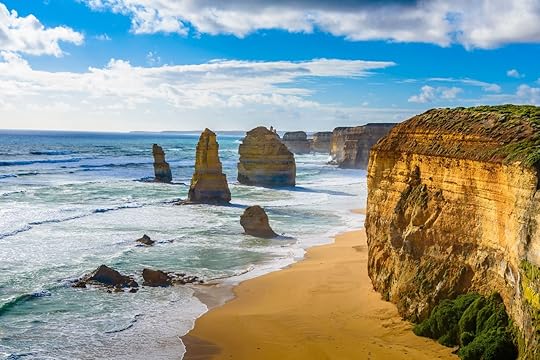
Heading to the land down under should be an indelible time — after all, it’s not a quick jaunt to get down there. While most travelers choose to base their trip out Sydney, leaving the Emerald City behind and packing your bags for Victoria further south offers a versatile and unforgettable experience, no matter what type of traveler you are. Land-wise, Victoria is the smallest state on the Australian mainland. But its coastline is famous the world over for the 12 Apostles rock formation and world-class surfing. The state has more wine producers than anywhere else in the country. And there’s the capital city, Melbourne, a city as rich in street art as it is cafe culture. Here are five reasons why Victoria should be your next Southern Hemisphere getaway.
Melbourne — not Sydney — is the country’s food and coffee capital.

Photo: Aleksandar Todorovic/Shutterstock
Sydney is great for your first touchdown in Australia. It’s easy, it’s where most international flights come, and you can’t really say you’ve been down under without a photo of the Opera House. If Guy Fieri were to open a restaurant in Australia, this is probably where he’d do it. But that’s what makes Melbourne, the country’s second biggest city, the best option for travelers who want to dive deeper. The first thing to do here is wander the city’s “laneways” and discover a slew of hidden coffee roasteries and boutique cafes. This city does cafes like nowhere else in Australia, and you could easily pass the day wandering through downtown from cafe to cafe and having brunch twice instead of lunch and dinner.
When it does come to having a meal outside of a coffee shop, you’ll have an almost overwhelming amount of options. For starters, Cumulus makes the charcuterie board look cooler than it ever has outside of a winery tasting room. For a splurge, head to Attica, which focuses on Australian ingredients that actually stretch back further than the country itself. It’s expensive — over $200 per person — but unless you’ve been somewhere else where a Black Ant Lamington has you drooling over the keypad, it’s an expense well justified if you fancy yourself a foodie. The only reason the place doesn’t have a Michelin star is that the Michelin system doesn’t exist in Australia.
Australia is known to be a beer-lovers country, but in Melbourne, there are plenty of exciting cocktail bars worth passing on a pint for. At Lily Blacks, just off the Parliament House in the heart of the city, order a Simian Sling, an original take on the iconic Singapore Sling saving you the need to chase down a Raffles hotel. The Everleigh and Beneath Driver Lane are other centrally located cocktail hubs Melbourners hit on the regular.
Victoria is actually home to Australia’s best wine regions.

Photo: evantravels/Shutterstock
Victoria will make you forget the stereotypes you’ve heard about Aussie wine. Situated far away from the mass-produced swill — think animal-clad labels and single-digit shelf prices — many wines coming out of Victoria hail from smaller, family-owned estates and are produced with an emphasis on sustainability and elegance. The Port Phillip zone encompasses five viticultural regions centered around Melbourne, making day trips from the city insanely easy to plan.
To taste small-batch wines produced here in the Yarra Valley, head to Mac Forbes, Payten & Jones, and Denton Wines. For elegant pinot noir, visit the Macedon Ranges and drop in at Bindi Wines. Just to the south of the Mornington Peninsula, which most notably produces both chardonnay and pinot. Moorooduc Estate, Polperro Wines, and Ocean Eight Winery offer tasting experiences on the peninsula. What’s cool about all of these wineries is that they’re all super close to the city. Mornington Peninsula is the furthest region, and it’s slightly over an hour from the city. Tour operators such as Amazing Yarra Valley will even handle the driving for you.
The clothes you packed are going to be fine.
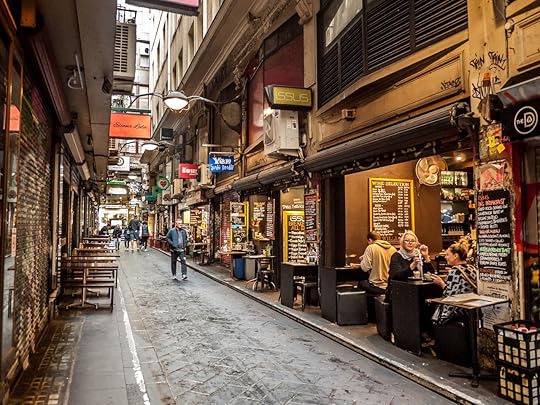
Photo: Shuang Li/Shutterstock
Melbourne is the type of place where quirky is celebrated, to an extent at least, and there’s certainly no need for a tie when heading to happy hour. Dress smart casual for dinner and nights out and casual for daytime excursions. Average daily highs during the summer months (December-February) hover around 75-79 degrees, with nighttime lows falling to the mid-50s. The winter months (June-August) are mild, with highs averaging 58 degrees and lows clocking in around 44. Pack a sweater or two and you’re set for outdoor explorations even in the evening. If for whatever reason you do feel the need to get new clothes, you can get your shopping fix over on Gertrude Street in Melbourne, where there’s no shortage of quaint clothing boutiques.
You can spend time at the beach, too.
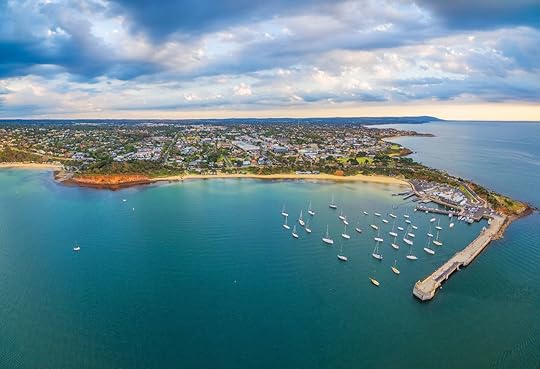
Photo: Greg Brave/Shutterstock
The Mornington Peninsula is to Melbourne what the Hamptons is to New York. Luxurious accommodations, swimsuit-clad sunbathers, and sandy beaches as far as the eye can see. Heading to the coast takes just one hour from Melbourne, and both locals and visitors tend to take advantage of this proximity. A day trip saves you the cost of checking into those luxury accommodations. For surfers, the best place to visit is Point Leo or Gunnamatta Beach. For beach jaunts filled with other outdoor activities, Port Phillip Bay is the easiest access to snorkeling and diving, and maybe a bit of yachting if that’s a verb you like to throw around proactively. For simple sunbathing and low-key swimming, head to South Beach, Rosebud, or Tideways Beach.
Penguin watching is a thing here.

Photo: Radoslav Cajkovic/Shutterstock
Heading to Phillip Island from Melbourne only takes about 90 minutes — you can actually drive onto the island via a short bridge — and is the closest you can get to Antarctic penguin watching short of visiting the Weddell Sea. The island’s first known Penguin Parade first began in the 1920s and, unsurprisingly, has become one of Australia’s biggest tourist attractions. Penguins arrive nightly around sunset and waddle across the island’s sandy beaches to take refuge for the night in their homes amongst the dunes. The main viewing area at Summerland Beach offers an elevated and panoramic view of the parade, and the views beyond the sand are equally impressive. 

More like this: You need to hike Tasmania, the least visited place in Australia
The post Why Victoria should be the base for your next trip to Australia appeared first on Matador Network.

Stonewall Riots anniversary in NYC
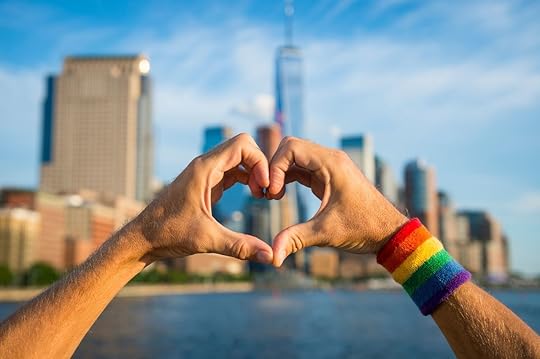
June 28, 2019, marks the 50th anniversary of the Stonewall uprising (alternately called the Stonewall riots or rebellion), which was a turning point in the LGBTQ+ rights movement in the United States. While people had long been working for equality for LGBTQ+ people in the US — including the “homophile movement” in the 1950s and ‘60s and other pro-LGBTQ+ demonstrations — the riots at the Stonewall Inn generated national media coverage, the formation of the gay and trans rights groups, and massive forward momentum for LGBTQ+ activists and the greater community.
This Pride month, cities around the globe are commemorating Stonewall’s 50th anniversary — and, in particular, New York City will be chock full of marches, exhibitions, performances, and other activities that shine a light on the events of the summer of 1969 and the growth of the LGBTQ+ rights movement. Here’s a quick rundown of Stonewall’s importance and the exciting events happening in NYC this month.
What is the Stonewall uprising?
When police raided the Stonewall Inn, a gay bar in Greenwich Village, late in the night on June 28, 1969, the patrons had had enough. They were homeless LGBTQ+ teens, trans women of color, drag queens, gay men, lesbians, and LGBTQ+ folks of all different races and backgrounds, many of whom had come from across the US looking for a place where they could be themselves. In the 1960s, New York City — and Greenwich Village, in particular — had a reputation for being that place.
The problem was that homosexuality and “cross-dressing” were still criminalized in New York and throughout the US. The presence of one gay man in a bar licensed by the New York State Liquor Authority could result in the bar being shut down for “disorderly conduct.” An 1845 law made it a crime to “masquerade” — to enforce this, police required that each person wear three articles of clothing of the appropriate gender at all times, effectively outlawing drag queens, drag kings, and many trans folks. Even slow-dancing with someone of the same gender could result in arrest.
To enforce these laws, police in New York City regularly conducted raids on gay bars and other locations where LGBTQ+ people gathered, leading to arrests, harassment, and often violence at the hands of police.
In the summer of 1969, in an effort to “clean up the streets,” those raids increased in frequency and brutality. By the time police arrived around 2:00 AM on Saturday, June 28, the Stonewall Inn had already been raided earlier that week, and other gay bars had been raided or shut down in the weeks prior.
It was a weekend night, and the bar was packed with a mix of people, many of whom were barred from other gay bars, including trans women, drag queens, and street kids. The bar’s lights were flipped on, and as the police asked for the patrons’ IDs, a crowd started to form outside the bar.
For some reason, while many of those folks had been arrested multiple times for being LGBTQ+, this time, they resisted. A drag queen was shoved in the back of the police truck and kicked back at the officer with her high heels. A butch lesbian tried to get away from the police, was beaten, and fought back. “Why don’t you guys do something?” she yelled. Historical accounts often credit the biracial lesbian and drag king Stormé DeLaverie with this line.
Yet, it wasn’t simply one person’s words that started the Stonewall riots. Many people who were at the riots have described it as a feeling that bubbled out of the community — the community finally coming together to stand up for itself. And in the midst of this fighting back, a riot began.
The police barricaded themselves inside of the Stonewall Inn, and an estimated 500 people gathered outside. Some tore up a parking meter and used it as a battering ram at the Stonewall’s door. Others threw bricks and bottles and, eventually, Molotov cocktails, chanting things like, “Gay power!” and “We want freedom!”
More police arrived and the riots grew, and the protesters weren’t backing down. And even though the Stonewall Inn was shut down, and the streets were cleared by 3:00 or 4:00 AM, the next day, the bar reopened — and the riots continued on Sunday, Monday, and by some accounts for up to six days, with reportedly up to 2,000 people protesting on a given day.
In the wake of the riots, several community members and activists formed the Gay Liberation Front (GLF) to carry forward the momentum of those nights. Trans activists and Stonewall protesters Sylvia Rivera and Marsha P. Johnson founded Street Transvestite Action Revolutionaries (STAR) and created the first shelter in New York City for LGBTQ+ youth. Within a few months of the Stonewall riots, LGBTQ+ activists called for a march to be held in New York City in June 1970 to commemorate the protests. Activists in other cities decided to march as well, and in June 1970, these marches were held New York City, Chicago, Los Angeles, and San Francisco — growing into the pride marches and parades we know today.
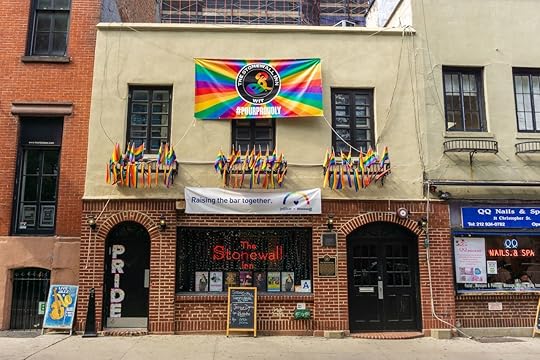
Photo: Massimo Salesi/Shutterstock
How and where to celebrate Stonewall in New York City
In honor of the Stonewall Uprising’s 50th anniversary, New York City will play host to an array of activities, rallies, and marches. This year, WorldPride, an international organization that seeks to rally LGBTQIA communities on a global level, will be in the US for the first time as they partner with New York City Pride to host more than 50 events throughout June. In addition, the arts and cultural community is sponsoring exhibitions throughout all five boroughs of New York City.
Here are just a few of things to see and do during this year’s NYC Pride month as we celebrate Stonewall’s 50th anniversary:
Art Exhibitions and Activities
The anniversary of Stonewall has inspired a range of artistic responses throughout the city. Highlights include the New York Historical Society’s exhibition “Stonewall 50,” Brooklyn Museum’s “Nobody Promised You Tomorrow: Art 50 Years After Stonewall” and “Love & Resistance, Stonewall 50” at the New York Public Library, among other arts-related events.
If films, plays, and performances are more your style, consider checking out OutCinema (June 17-19), the Criminal Queerness Festival (June 13-July 6), or any of the dozens of performances scheduled this Pride season.
Stonewall and LGBTQ History Tours
Several organizations are offering Stonewall and LGBTQ+ history tours during Pride month. Tour & Toast for Stonewall (June 24 and 27, $50) is a 1.5-hour tour of Greenwich Village that will delve into Stonewall’s history and New Yorkers’ efforts to achieve LGBTQ+ rights. Beyond Stonewall: LGBT History Tour (June 22 and 29, $29) explores LGBTQ+ history on the streets of Manhattan, from the 1960s to the present day. And Pride Tours NYC’s Walking Tour (June 27, $30) does a deep dive into the story of Stonewall.
Stonewall 50 Commemoration Rally
Fifty years after the Stonewall Uprising, activists, organizers, politicians, the LGBTQ+ community, and our allies will be coming together to advocate for LGBTQ+ rights in the US and beyond. On June 28, 6:00-9:00 PM, members and supporters of the LGBTQ+ community will rally at Christopher Street and Waverly Place, the original site of the Stonewall Rebellion, to take a stand for human rights, social justice, and liberation.
When: June 28
Queer Liberation March and Rally
The Queer Liberation March and Rally is “a people’s political march” that will be held in honor of the Stonewall Rebellion on June 30. Boasting “no corporate floats, and no police,” this march seeks to highlight the ongoing struggles faced by LGBTQ+ communities — especially those who are most marginalized. The march kicks off at 7th Avenue south of Christopher Street at 9:30 AM, and folks are welcome to join in throughout the march, which will end with a rally in Central Park.
When: June 30
NYC Pride March
On June 30, NYC Pride and WorldPride are teaming up for this year’s official NYC Pride March. The parade steps off at noon at Madison Square Park, and the route will pass The Stonewall Inn, The Stonewall Monument, and the NYC AIDS Memorial. In 2018, there were more than 550 groups who participated in the march, and this year’s march will likely surpass those numbers. So come ready to celebrate with pride!
When: June 30
Other events
Looking for something more? From local Pride festivals and rallies in NYC’s five boroughs to poetry readings, WorldPride and NYC & Company’s events lists can keep your heart and calendar filled all summer long.
For more info on Stonewall, check out these resources:
Stonewall Forever — An online, interactive monument to Stonewall that includes historical information, oral histories, interviews, and a short documentary on Stonewall’s impact.
Stonewall Uprising — A PBS documentary detailing the events of Stonewall and sociocultural environment that led up to the riots.
Stonewall 50 Consortium — A collaborative group of organizations and institutions producing materials and events in response to Stonewall’s 50th anniversary.
Documentaries about some of the Stonewall protestors, including Major!, Pay It No Mind: The Life and Times of Marsha P. Johnson, and many more.


More like this: These landmarks around the world are celebrating Pride Month in style
The post Remembering Stonewall: 50+ years of LGBTQ+ pride in New York City appeared first on Matador Network.

Motorbike from Chiang Mai to Pai
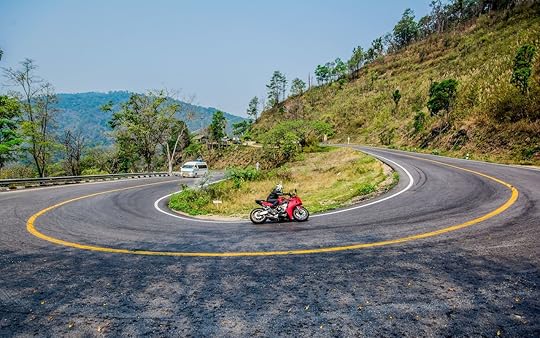
Pai is a quaint little hippie town located in the north of Thailand. Originally known for its lush hiking trails, cascading waterfalls, surrounding mountains, and chilled laid-back vibe, the town caters to cheap accommodation, healthy food, yoga, parties until sunrise, and a variety of outdoor activities — it’s essentially the Bali of Thailand, just without the beach. Pai attracts backpackers and expat travelers from around the world, and they increasingly tend to have one thing in common: They arrive via motorbike from Chiang Mai. This is an adventurous route that tackles 762 windy road turns along the way. Motorbiking to Pai is the best way to truly experience the wondrous views of the northern Thai mountains. Here’s how to plan and execute the trip.
The route

Photo: Dinozzzaver/Shutterstock
The steep route to Pai, along route 1095, spans about 90 miles and on average takes three to four hours to complete. The 762 twists and turns on the road are treacherous at first, but don’t let this put you off. You’ll get the hang of the leaning, swaying motion that goes into them after the first couple dozen, and by the time you’re halfway there, you’ll be a full-on pro. You could take a bus from Chiang Mai’s Arcade Bus Station, but the bus doesn’t stop at the quirky cafes and seriously stifles the mountainous views. Besides the constant switchbacking, the route is very straightforward. Take route 107 north out of central Chiang Mai for 23.7 miles, then turn left onto 1095 towards the town of Ki Lek. Stay on 1095 all the way to Pai, pulling off at quirky cafes and to take what are certain to be the best landscape photos of your trip. You ride at your own pace and won’t have to experience the notorious driving of the bus and van drivers who give the impression that they’re taking part in a rally race.
Where to rent a bike (and which one to rent)
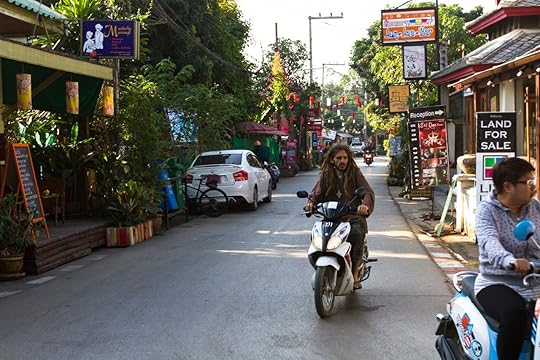
Photo: De Visu/Shutterstock
Be prepared to spend around $15 for a one-way rental, and about double that for a roundtrip. Also, make sure you purchase travel insurance (around $3-5), as you don’t want to be stung by heavy charges if you have an accident. The rental companies normally ask for a deposit of anout $60, which they return to you as soon as you hand in the motorbike. As a hack, opt for the one-way rental even when planning to return to Chiang Mai the same way you came. This option is perfect for those who have no fixed plan and would prefer to explore Pai at their own pace, instead of having to rush back to Chiang Mai to drop the motorbike back. There will also be days when you would prefer to take a breather and sip wheatgrass (a popular drink there), instead of zooming around on a motorbike. If you rent a motorbike that needs to be dropped back to Chiang Mai, you will be charged a daily rate, even when you aren’t using the bike.
Now for the process of actually renting the bike — the first thing to make sure is that the motorbike you rent is no less than 125cc, giving you enough power to push up and over the mountains at a comfortable pace, and without the bike sounding like a broken hairdryer. The Honda Click 125cc is a popular option and available at both of the rental services listed below. It has ample space to store your bags and pockets in the front to keep your phone handy, which comes in use if you need a bit of navigational guidance from Google Maps during the journey. These motorbike providers in Chiang Mai can assist you with a one-way rental from Chiang Mai with specific instructions on where to drop it off in Pai, and also offer roundtrip rentals.
Aya Service — Aya offers to transport your luggage and heavy backpack in its van for free and claim it on the other side of the ride, allowing you to ride lightly without baggage.
CatMotors — This is a smaller company, but is personable and takes safety seriously. If you rent a bike from CatMotors, it allows you to store your belongings in Chiang Mai for free to ensure you won’t be weighed down by your big backpack on the ride.
Prepping for the ride
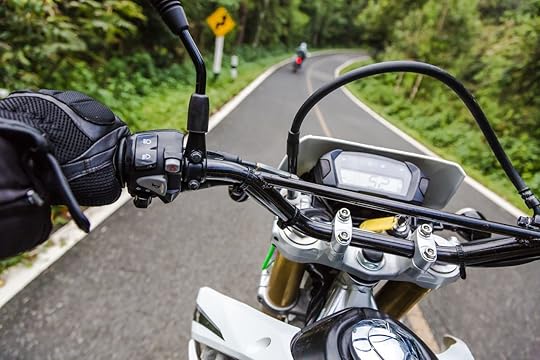
Photo: AsiaTravel/Shutterstock
If you take only one piece of advice from this or other riders who have completed the trip, let it be this one: Dress appropriately. Which in this case means a helmet and actual shoes. Anything that shows your toes — strap-on sandals included — is inappropriate footwear. You will have plenty of opportunities to flash your toes in Pai. Covered shoes allow you to grip the ground if you need to balance or come to a sudden halt. Toms are a better alternative to flip flops, as they are light, easy to slip on, and protect your feet from the elements, but if you want to protect your feet completely, a pair of hiking boots is the best option.
Equally important is a helmet that covers your face, as there will be all sorts of elements that will fly into you including twigs, bugs, and little stones. If you can’t get a helmet with face protection, make sure you wear sunglasses. You want to protect your eyes from sun and debris, and also don’t want to be up on the mountain, sans sunglasses, when it starts raining, unless of course you’re all about being stabbed repeatedly in the eyeballs as you whiz around a hairpin turn.
Beyond those two critical items, bring a scarf and an extra layer that covers your arms. For the first part of the journey, it will be sunny and bright, but as you ride higher up into the mountains it will become chilly. Quite often, it will also rain. Nothing ruins a great motorbike ride like being soaked to the bone then having cold wind slap your bare arms and legs like you’re a piñata. A waterproof or water-resistant windbreaker will keep you dry and warm during the ride.
Handy tips and best practices
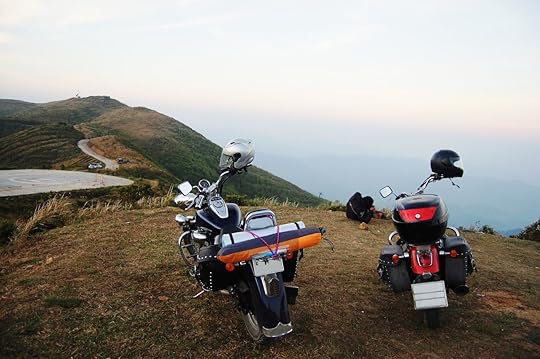
Photo: Anirut Thailand/Shutterstock
If you fancy yourself a picture taking fiend, now is your time to shine. It is extremely important to take a 360-degree view of the motorbike in the event that you return the bike and are charged for damage which you did not cause. If there are any parts of the bike that are damaged, make sure you draw attention to them before you embark on your journey.
Zooming around the Thai countryside takes up more energy than you might think. Having snacks to boost your energy along the way is a good idea. There are a number of gas stations in Chiang Mai along the way, so fuel up which high energy food items like nuts, sweets, and bread to give you that sugar boost when you need it. It’s important to be focused and awake, especially when you are hurtling around corners and sharing the road with those nutty van drivers. There are a number of sights you can explore along the way, and some involve soaking yourself in pools. So bring a swimsuit, flip flops, and a towel in your pack just in case, as riding in wet clothes will make you feel extremely cold and the ride will be less pleasant as a result.
For an optimal experience, take these pointers into consideration:
Get an International Driver’s Permit. At some point, unless you are extremely lucky, you will encounter the police. Unfortunately, they will look for any opportunity to fine you, so a bribe can be negotiated. They will initially ask if you have an International Driver’s Permit, or IDP, which you can easily get from a car insurance company like AAA. If you have an IDP, the police will then ask for the bike documents. So, while you are on a picture taking frenzy before your ride, make sure you ask for all the relevant motorbike documents (registration, tax, etc.) in the event that you are stopped by the police.
Keep cash on you. If you don’t have an IDP or the bike documents, it’s likely you are going to have to pay a fine, which can be discounted, as it’s actually a bribe. To avoid all your holiday money being offloaded by the police, store most of your cash in a hidden pocket in your bag. Keep a minimal amount in your wallet, $50 or less, which you can proceed to show the police when they ask you to pay. It is likely they will take what you have and ask you to go on your way. Also, if you get “fined” on the way to Pai, make sure you ask for a receipt, so if you get stopped again, you can show them evidence that you have already been penalized.
Leave early in the morning. Leaving Chiang Mai by 8:00 AM will help you circumvent any roadblocks and traffic and make any unplanned encounter with the police unlikely. This also gives you more time to explore sights along the way without feeling rushed. Be sure to fuel up before leaving town. This goes for other towns along the route as well. If you see a gas station and you are at half-tank, fuel up. It’s better to be cautious, as the last thing you want is to run out of gas in the middle of nowhere. Once you get nearer to Pai, there will be numerous little fuel shacks that sell bottles of fuel.
Nutty drivers. You’re going to encounter speed demons on the highway. The best thing to do is to let them pass and don’t try and engage in a road battle. Ultimately, they are bigger and more dangerous, so it really isn’t worth it. If a bus or van is honking behind you, let them pass, smile and flash them a peace sign. They will be more accommodating when they bump into you again, which they often do, as they make numerous stops.
Potholes and debris. On a whole, the road conditions aren’t too bad but there will be a few potholes and debris lying on the road. It is important not to ride like a speed demon as you won’t have time to avoid them. In the event you have an accident, don’t panic, it happens to the best of us. Get off the road as quickly as you can, and if you can bring your motorbike with you, even better. Call the bike rental company and you’ll be guided through the next steps.
What to see along the way
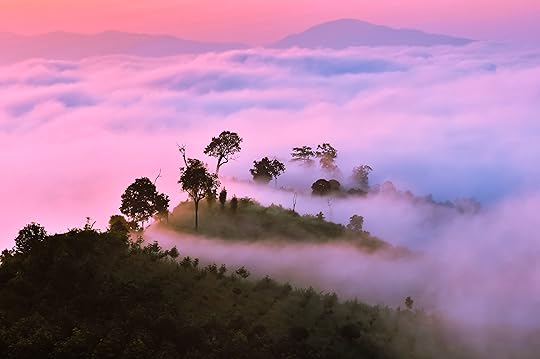
Photo: NIRUN NUNMEESRI/Shutterstock
Another benefit of leaving early is the opportunity to explore a number of sights along the way before sunset. Here are the must-do’s for any first-timer:
Mork Fa Waterfall — Around 30 minutes into your journey there will be signs to this waterfall. It costs around $3.20 to enter.
Pong Dueat Geyser — Take a detour around 3.7 miles, about a 10-minute ride, from route 1095 to Pong Dueat Geyser. Note that it’s a bumpy dirt road, but totally worth it. It costs around $9.60 and a little forest trail will take you to mineral baths as well as geysers of varying sizes.
Pai Canyon — This is a fantastic hiking trail with multiple viewpoints. Entrance is free but you will have to hike many stairs to get to the beginning of the trail.
Mari Pai Resort — Famous for its tree swing that looks out onto the lush green hills, visiting is free, but prepare to wait 20 to 30 minutes for an Instagram shot.
Coffee shops — There are a number of quirky cafes you can enjoy along the way such as Coffee Tea Sapan which has a number of transformer-like statues on the roadside. The Container has colorful swings and equally vibrant fruit shakes to cool you down after your ride.
Motorbiking from Chiang Mai to Pai is a whirlwind journey filled with fascinating scenery. Take frequent breaks and make sure to snap plenty of photos along the way — when your bike is parked, of course. 

More like this: 7 incredible motorbike journeys in Southeast Asia
The post What you need to know before motorbiking from Chiang Mai to Pai appeared first on Matador Network.

Climbers illegally land plane Blanc
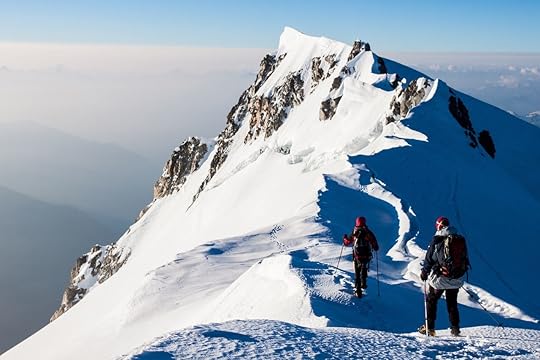
You might call it badass, or you might call it cheating, but the police call it illegal. Two Swiss mountain climbers landed a small plane just 1,312 feet from the summit of Mont Blanc, Europe’s tallest peak with a height of 15 ,780 feet. Since the move wasn’t exactly subtle or legal, authorities were quickly in pursuit. Upon landing the plane they began climbing to the top of the mountain, presumably because they were either trying to incite local authorities, or were simply too lazy to make the full climb.
As reported by The Guardian, Eric Fourinier, mayor of the nearby town of Chamonix, said, “It constitutes an intolerable attack on the high mountain environment and on all existing protective measures.” He believes the incident was a deliberate provocation.
The climbers were equipped with tools like ropes and crampons, and wasted no time beginning their trek to the summit. Unfortunately for them, they were quickly intercepted by police and asked to turn back. They were not arrested, though their personal information was recorded and an investigation has been opened into any punishable offenses that may have been committed.
Due to high visitor numbers, authorities have introduced a daily cap of climbers on Mont Blanc. According to CNN, climbing the mountain is prohibited unless you have booked a room in one of its shelters, and defiance of this rule could result in a $336,000 fine and two years in jail. 

More like this: The 7 most frustrating airports around the world
The post Climbers illegally land plane on Mont Blanc, get chased by police appeared first on Matador Network.

Louvre’s ‘Mona Lisa’ VR experience

The “Mona Lisa” is probably the most famous painting in the world, but it’s also the most difficult one to see in person — not only is it much smaller than what you may think, but it’s also surrounded by massive crowds all the time. This October, the Louvre is tackling this issue with a VR experience that will allow visitors to see the painting up close and personal without hordes of other tourists or the protective casing.
The actual reason behind this initiative is to celebrate the 500th anniversary of Leonardo da Vinci’s death in a retrospective exhibit that will start on October 24, 2019. That said, the result is the same: You’ll have Mona for yourself.
Collaborating with VR company HTC Vive, the VR experience called “Mona Lisa: Beyond the Glass” will allow visitors to use virtual reality to look closely at the masterpiece and discern details invisible to the naked eye.
According to a statement from the Louvre, the project is meant to “reflect the revolutionary practice of Leonardo […] The VR experience will pay tribute to an artist who has continued to innovate throughout his rich career and will celebrate the undying legacy of one of the greatest painters in history.”
In addition to the “Mona Lisa,” other da Vinci drawings and artwork will also be on display at the exhibition, including “The Virgin of the Rocks,” “La Belle Ferronnière,” “Saint John the Baptist,” and “Saint Anne.”
“Beyond the Glass” will also be available through HTC’s digital subscription service, so you can still get the full “Mona Lisa” experience even if you can’t make it to Paris. 

More like this: The 7 most incredible museums to visit in 2019
The post Check out the ‘Mona Lisa’ away from the crowds and its protective casing appeared first on Matador Network.

Matador Network's Blog
- Matador Network's profile
- 6 followers



